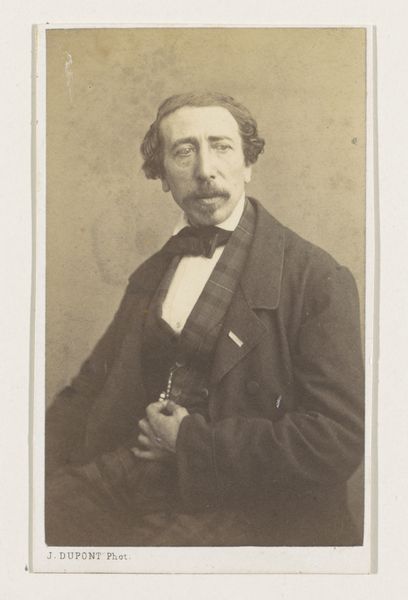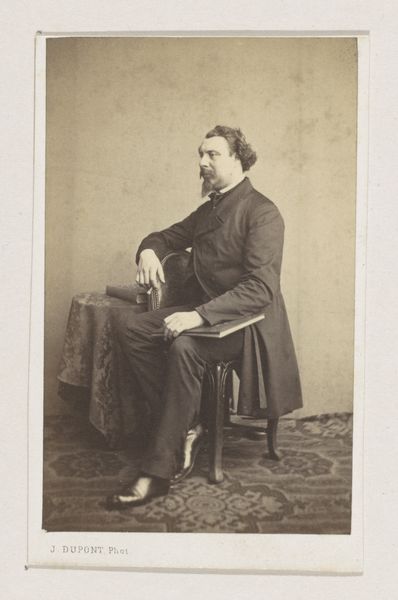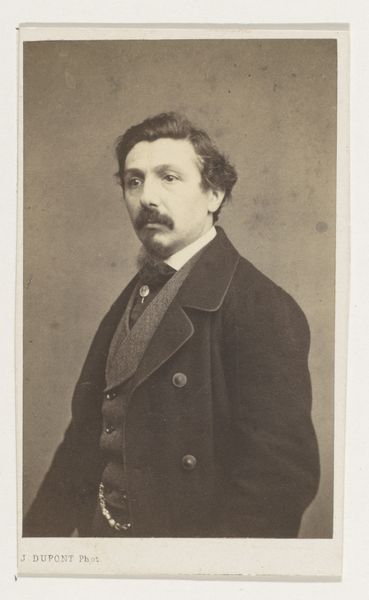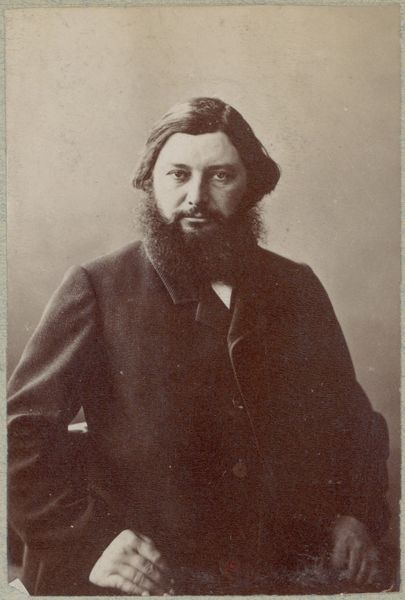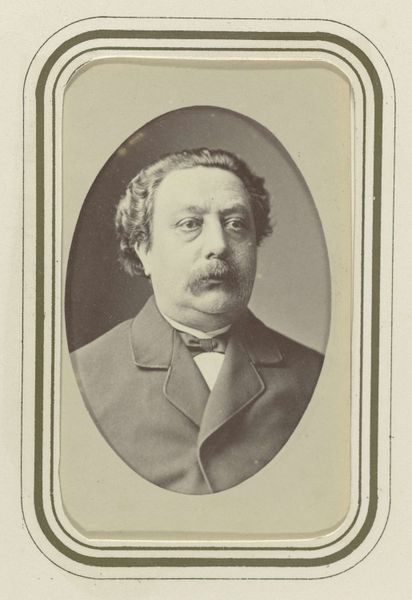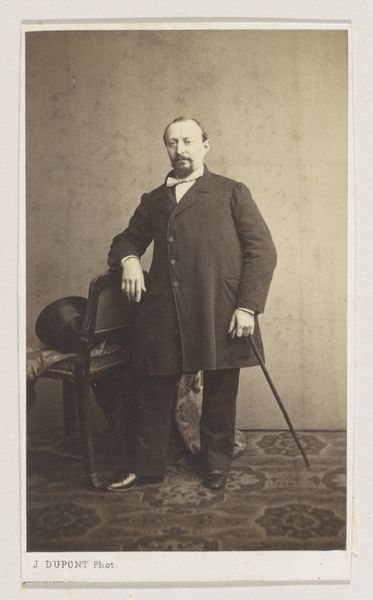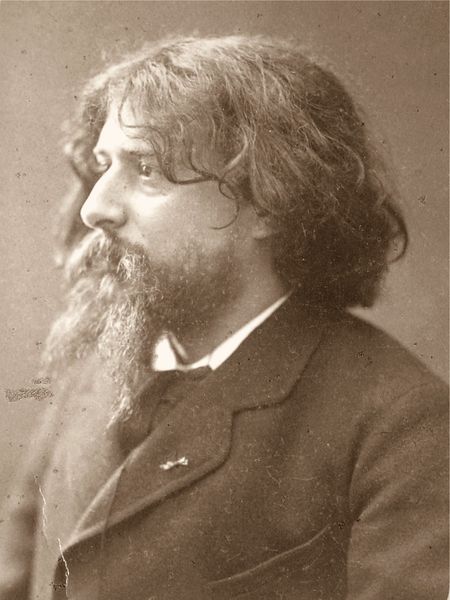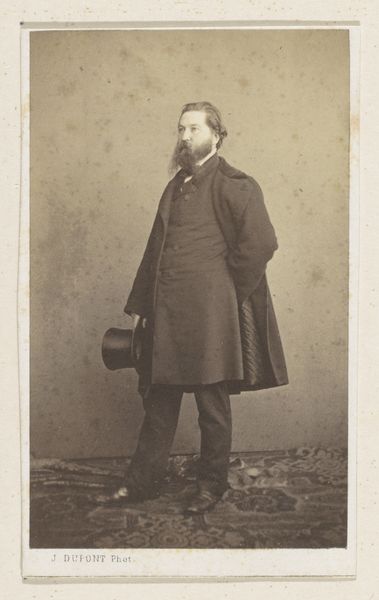
Dimensions: height 105 mm, width 64 mm
Copyright: Rijks Museum: Open Domain
Maurits Verveer captured this image of Jacob Maris using a phototype technique, a method of printing photographs that gained popularity in the late 19th century. The phototype process, also known as collotype, involved coating a glass plate with a light-sensitive gelatin emulsion, which was then exposed to a negative. After exposure, the gelatin hardened in proportion to the amount of light it received, creating a printing surface with varying tones. This plate could then be inked and used to make multiple prints on paper. The result is a finely detailed image with a subtle tonal range, quite different from mass-produced photography. What’s interesting about this particular print is how the process democratized image-making, making it more accessible to a wider audience. Unlike painting, which was reserved for an elite class, this medium opened up new possibilities for artistic expression and visual communication. The amount of labor to create such artwork is also notable, highlighting the shift towards industrialization and the changing role of the artist in society. Ultimately, this photograph is a reminder of the intricate relationship between technology, art, and society.
Comments
No comments
Be the first to comment and join the conversation on the ultimate creative platform.

